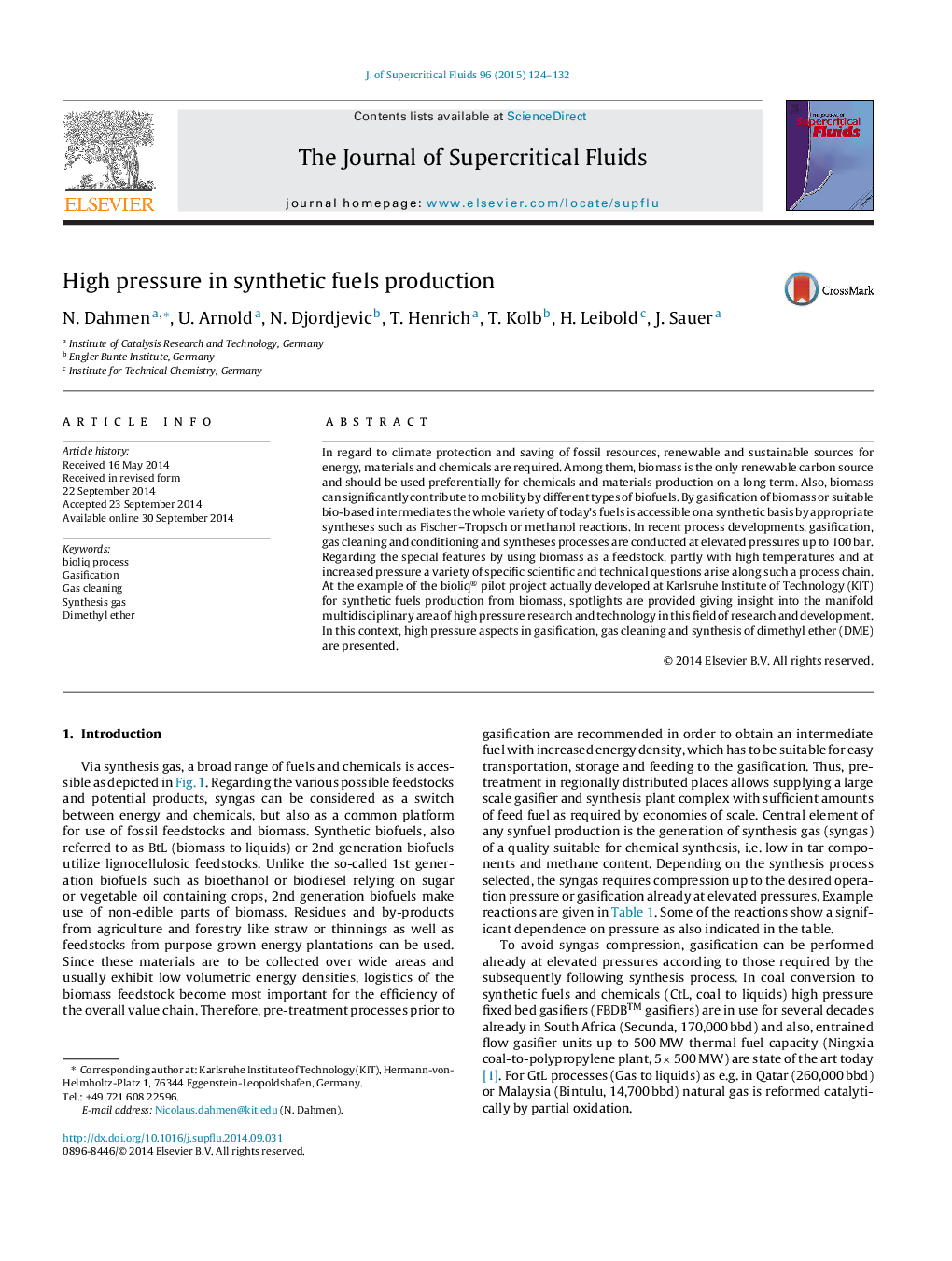| Article ID | Journal | Published Year | Pages | File Type |
|---|---|---|---|---|
| 230448 | The Journal of Supercritical Fluids | 2015 | 9 Pages |
•Pressure effects in synthetic fuels production are presented.•The bioliq process is used as an example.•Spraying in high pressure entrained flow gasification.•High temperature CO2 removal by new sorbent materials.•Pressure effects in the single step dimethyl ether synthesis.
In regard to climate protection and saving of fossil resources, renewable and sustainable sources for energy, materials and chemicals are required. Among them, biomass is the only renewable carbon source and should be used preferentially for chemicals and materials production on a long term. Also, biomass can significantly contribute to mobility by different types of biofuels. By gasification of biomass or suitable bio-based intermediates the whole variety of today's fuels is accessible on a synthetic basis by appropriate syntheses such as Fischer–Tropsch or methanol reactions. In recent process developments, gasification, gas cleaning and conditioning and syntheses processes are conducted at elevated pressures up to 100 bar. Regarding the special features by using biomass as a feedstock, partly with high temperatures and at increased pressure a variety of specific scientific and technical questions arise along such a process chain. At the example of the bioliq® pilot project actually developed at Karlsruhe Institute of Technology (KIT) for synthetic fuels production from biomass, spotlights are provided giving insight into the manifold multidisciplinary area of high pressure research and technology in this field of research and development. In this context, high pressure aspects in gasification, gas cleaning and synthesis of dimethyl ether (DME) are presented.
Graphical abstractFigure optionsDownload full-size imageDownload as PowerPoint slide
